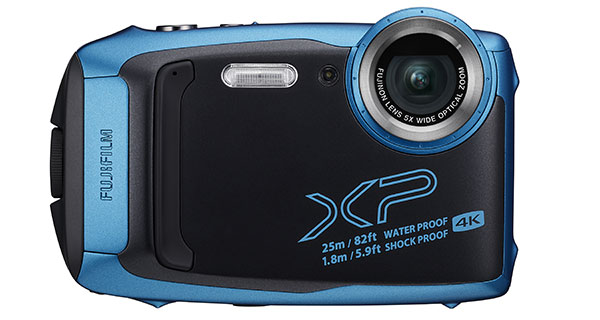 You might think point-and-shoot cameras are going the way of the fax machine and dodo bird, but don’t write them off just yet.
You might think point-and-shoot cameras are going the way of the fax machine and dodo bird, but don’t write them off just yet.
Smartphones have become the default for shooting photos and videos. Phones give even some of the latest digital SLR cameras a run for their money in terms of photo quality. And they’re convenient, always at your fingertips to capture that Instagram moment.
But there are reasons for considering a point-and-shoot camera.
Obvious ones include saving your phone’s precious battery life, reducing wear and tear on your phone and avoiding using up valuable storage space that you never seem to have enough of.
Others might appreciate the feel of real buttons, a physical shutter, a real viewfinder and the flexibility to adjust settings exactly the way you want.
While higher-end smartphones have decent lenses, the rest of the camera apparatus is mostly average. Photo quality is not as sharp, particularly in low light conditions.

The FujiFilm FinePix XP140 has a large viewfinder and has a water-proof, shock-proof and freeze-proof body
Those who take distance photos may also prefer a point-and-shoot because of a camera’s real optical zoom, which offers true lens adjustment. It gives you the same number of pixels in your frame as you zoom in. In contrast, the digital zoom found on most phones makes things appear closer by simply making the pixels larger. So as you zoom in, there are fewer pixels in a frame. The result is a grainier photo or video.
Opting for a stand-alone camera also allows you to disconnect from the world.
And they’re cheaper than the latest smartphones.
These aren’t your parents’ Kodak Instamatic. Digital point and shoot cameras have evolved.
The compact new Fujifilm FinePix XP140, for instance, has a massive 16.4 mega-pixel sensor. That means you can even print a huge poster from a photo. You can record ultra-high-definition video
It also has a 28-mm wide-angle lens with a 5X true optical zoom.
The FinePix XP140 has the smarts to detect the main subject in a scene and the automatically optimize the camera setting so the picture comes out just right. It also makes for better portrait shots by focusing on the eyes and the self-timer mode automatically releases the shutter when it detects a smiling face.
It also has a stabilization feature that reduces blur from camera shake. And it has a time-lapse feature.
The remote shoot feature allows you to place the camera in a tree and and move away before using your phone to activate the camera. It’s a great feature for wildlife photography.
The FinePix XP140 is also dust proof, shock proof, freeze proof (down to -10C) and water proof (down to 25 metres).
Besides coming in five cool colours, the camera features the latest Bluetooth technology to transfer files to your smartphone, computer or printer without a cable.
It retails in Canada for up to $239.99 at places like London Drugs, Best Buy and Amazon.
Troy Media columnist Greg Gazin, also known as the Gadget Guy and Gadget Greg, is a syndicated veteran tech columnist, communication, leadership and technology speaker, facilitator, blogger, podcaster and author. Reach him @gadgetgreg or at GadgetGuy.ca.
The views, opinions and positions expressed by columnists and contributors are the author’s alone. They do not inherently or expressly reflect the views, opinions and/or positions of our publication.
Listen to our PODCAST




